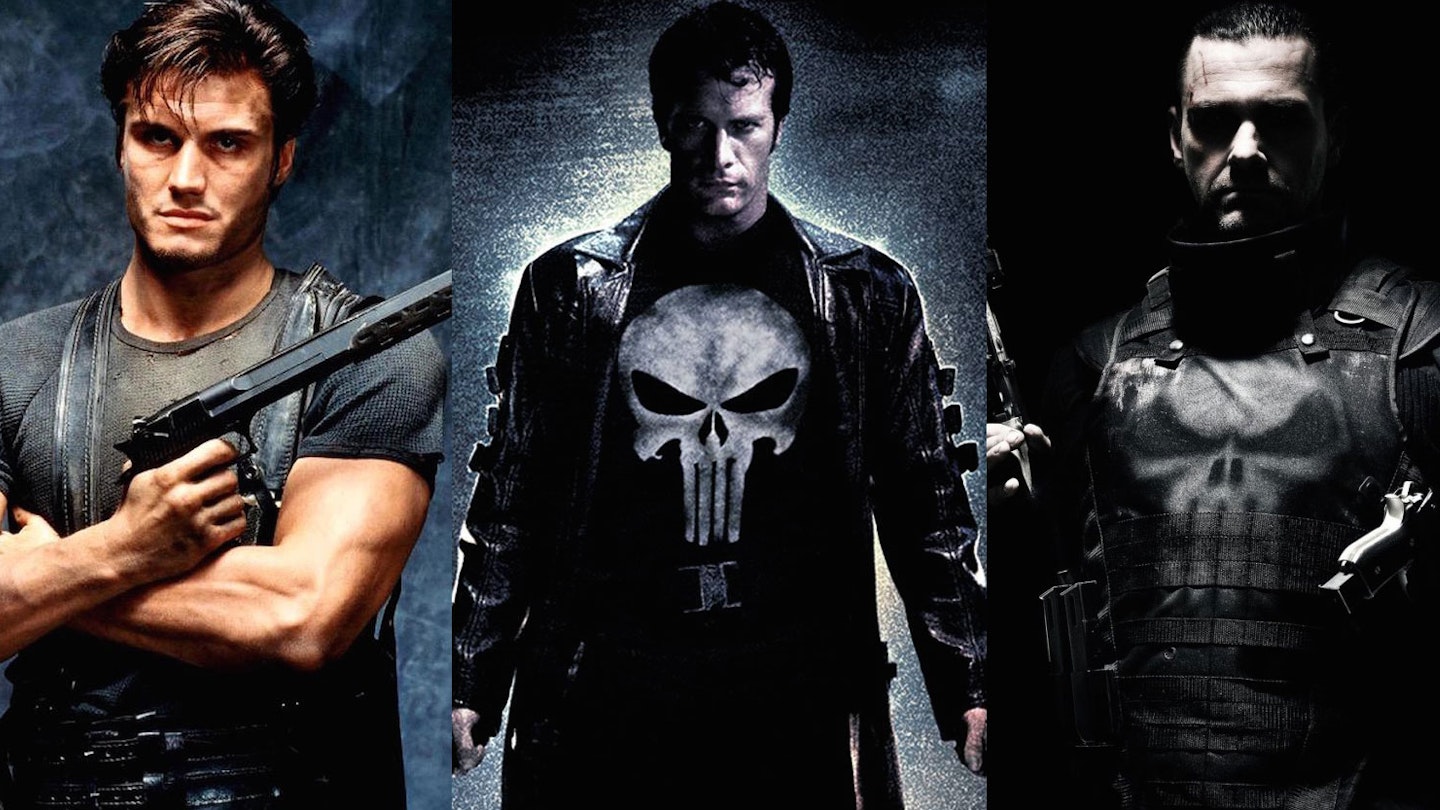Origins
First Appearance: Amazing Spider-Man #129 (1974).
Creators: Gerry Conway, Ross Andru, John Romita
Frank Castle was born Francis Castiglione to Italian-American parents, and considered joining the Catholic priesthood before signing up with the US Marine Corps. A military prodigy, he gained expertise in weapons and reconnaissance and became an expert sniper. He also received demolition training as a Navy SEAL, and served in Special Forces during the Vietnam War, where his particular taste for violence first emerged. Back on civvy street after ‘Nam, his wife and children were murdered by the Costa crime family (nothing to do with the coffee shop empire) in Central Park while on a picnic, after witnessing a mob execution. Corrupt cops denied Castle justice, so he set himself up as vigilante assassin The Punisher to get revenge not just on his family's killers, but on criminals as a whole.
USP
Unusually among the Marvel hero stable, The Punisher is a mass-murderer. He has no superpowers but, somewhat like Batman, is trained to the nth degree in weapons, combat and tactics. Sometimes he drives a "battle truck": a mobile base of operations. Also unusually, at least in his incarnation in Marvel’s MAX line, he ages in real time: writer Garth Ennis presenting a Castle in his late fifties beginning to deal with the punishment he’s dealt to his own body, as well as the opposition.
Commentators often like to call him "morally ambiguous". There's nothing ambiguous about him: he's a reprehensible fascist. What's ambiguous is our response to him, which treads that queasy line between repugnance and the visceral knee-jerk satisfaction of seeing bad guys shot in the face.
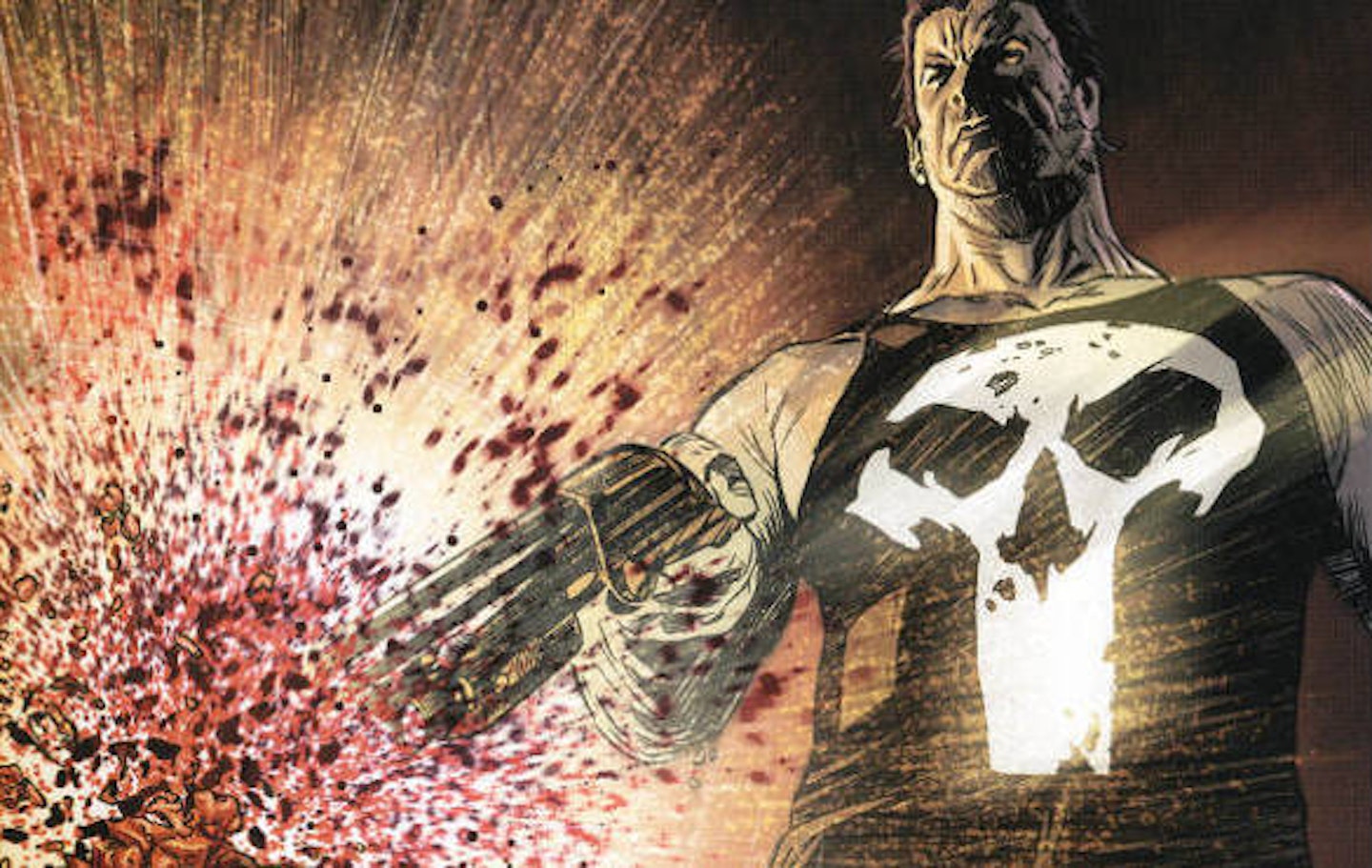
Evolution
The Punisher made his first appearance as a Spider-Man villain, targeting the wall-crawler because he thought he'd murdered Norman Osborn. More of a goon in those early days, he was nevertheless a hit with true believers, and gradually evolved over subsequent sporadic appearances in other characters’ titles into the anti-hero we now recognise. Writers often used his psychopathic agenda to counterpoint the more measured crime busting of featured heroes: see, for example, his appearances in Frank Miller’s Daredevil. Castle gradually became an uneasy Spidey ally, but he never clicked well with Matt Murdock.
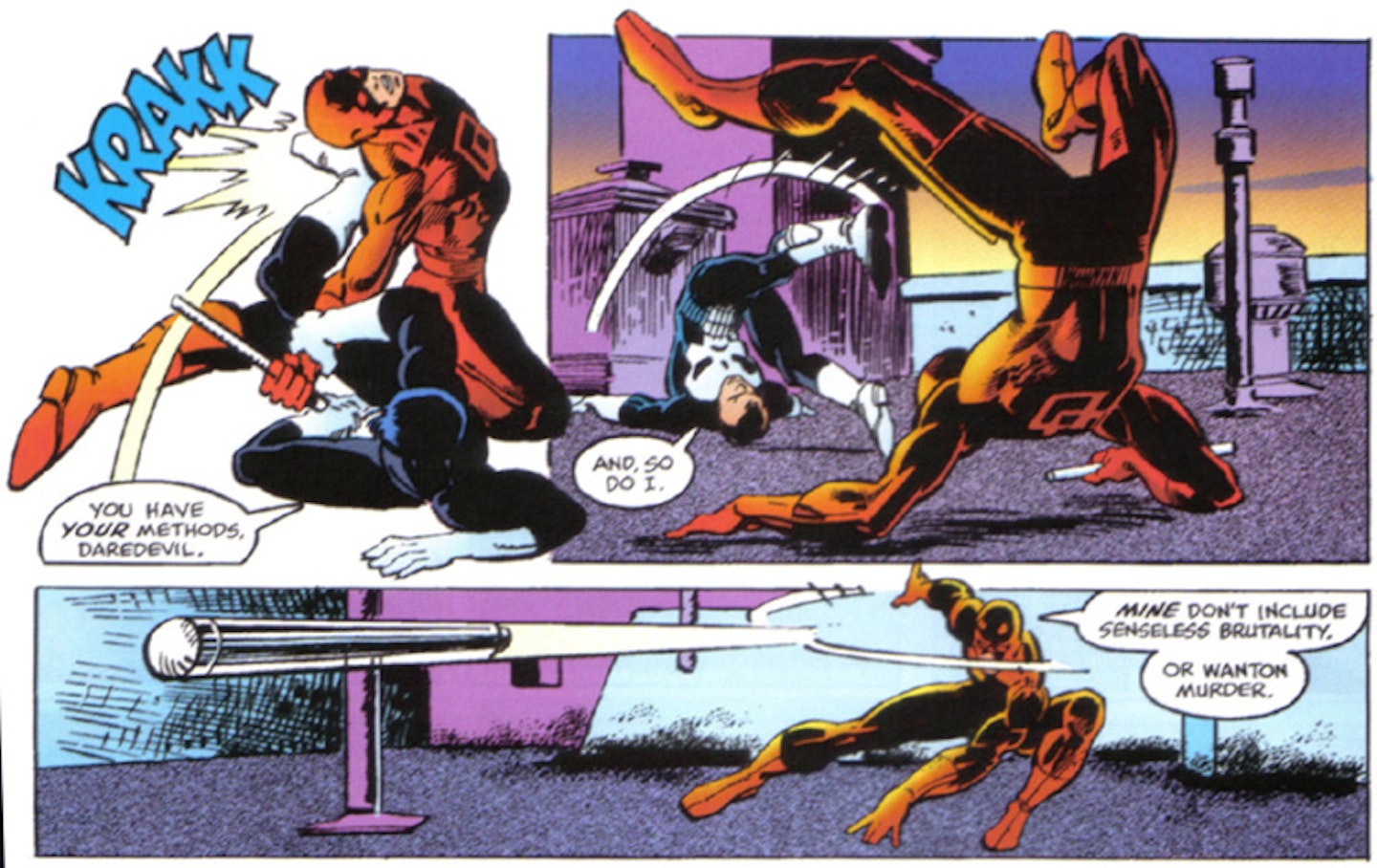
He finally got his own series in 1986, with a not-at-all enthusiastic Marvel making clear that the responsibility was editor Carl Potts’ should the experiment fail. In a zeitgeist where the one-man-army action movie ruled, however, they needn’t have worried. Steve Grant’s hard-boiled five-issue Circle Of Blood – in which The Punisher breaks out of jail on Rikers Island and is given carte-blanche to start killing again by a mysterious organisation – remains one of the title's high watermarks and cemented The Punisher’s place in Marvel’s top tier for years to come.
It wasn’t all plain sailing, however. By the mid-‘90s sales had stalled. Ill-advised attempts to rebrand The Punisher got the derision they deserved, like the short-lived series that had Castle killed and resurrected as a supernatural entity in the employ of angels. It was only when writer Garth Ennis and artist Steve Dillon, just off Vertigo's Preacher, made the surprise move to Marvel to revive the character that The Punisher really found his feet again.
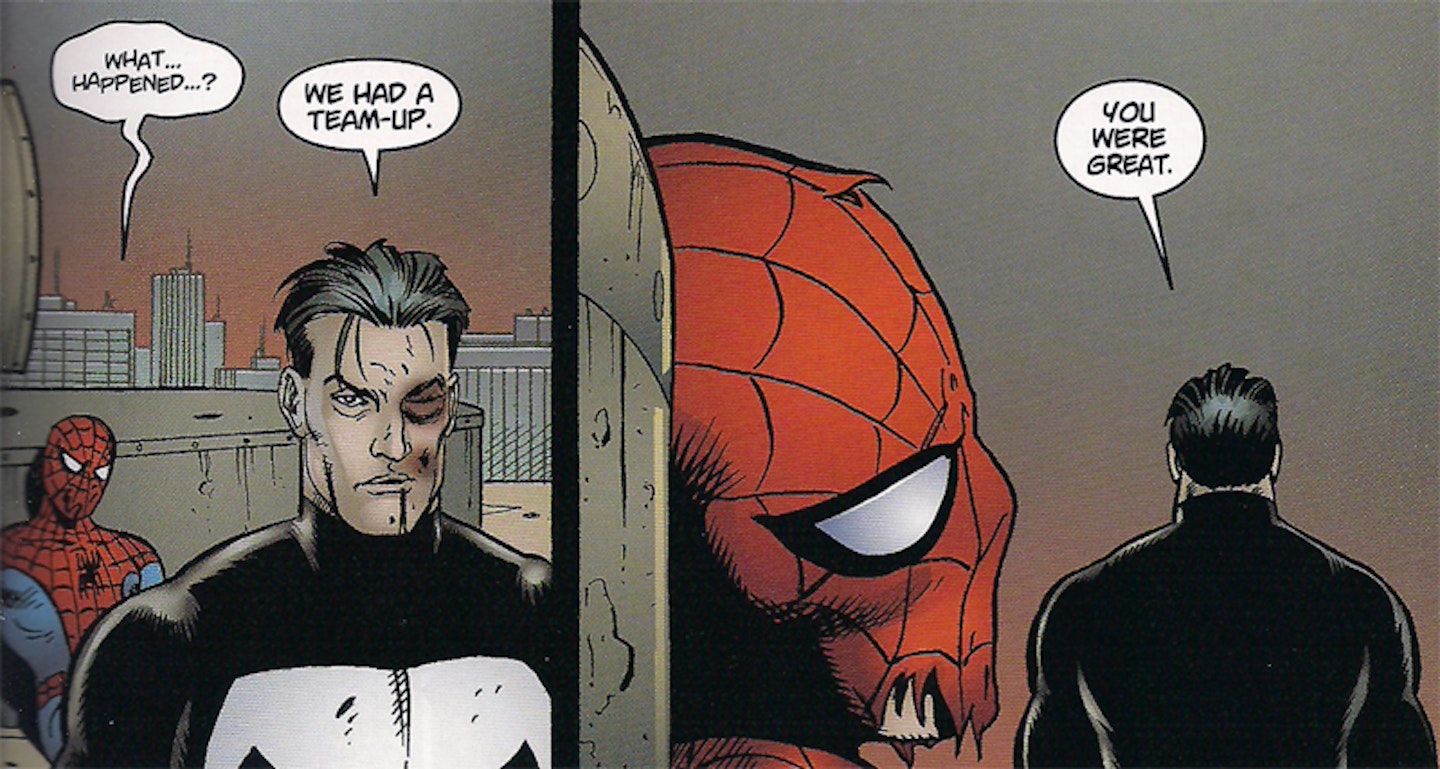
Allowed more graphic violence than previously in the Marvel Knights strand, the new Punisher was both eye-wateringly gruesome and scurrilously funny. Ennis then rebooted again for the even more “adult”, brutal and generally more serious MAX line, beginning with newly fleshed-out ‘Nam –set origin story Born, before pitting Castle against hissable villains like sex traffickers, terrorists and recurring brick-shithouse Barracuda. Ennis moved on after a hundred or so issues (across Knights and MAX), but laid important new groundwork that his successors, for the most part (give or take the ageing), have stuck to. Although the less said about FrankenCastle the better.
Other recurring characters
Microchip: A technology whizz whose nephew was killed by The Kingpin, sending him into Castle's vigilante orbit. He supplies Castle with ammunition and weapons; helps his investigations with his hacking skills; and launders his finances. Some Punisher runs have turned him into a villain, and he's been killed off at least twice - once by Castle himself. Wayne Knight (Seinfeld's Newman) played him in Punisher: War Zone.
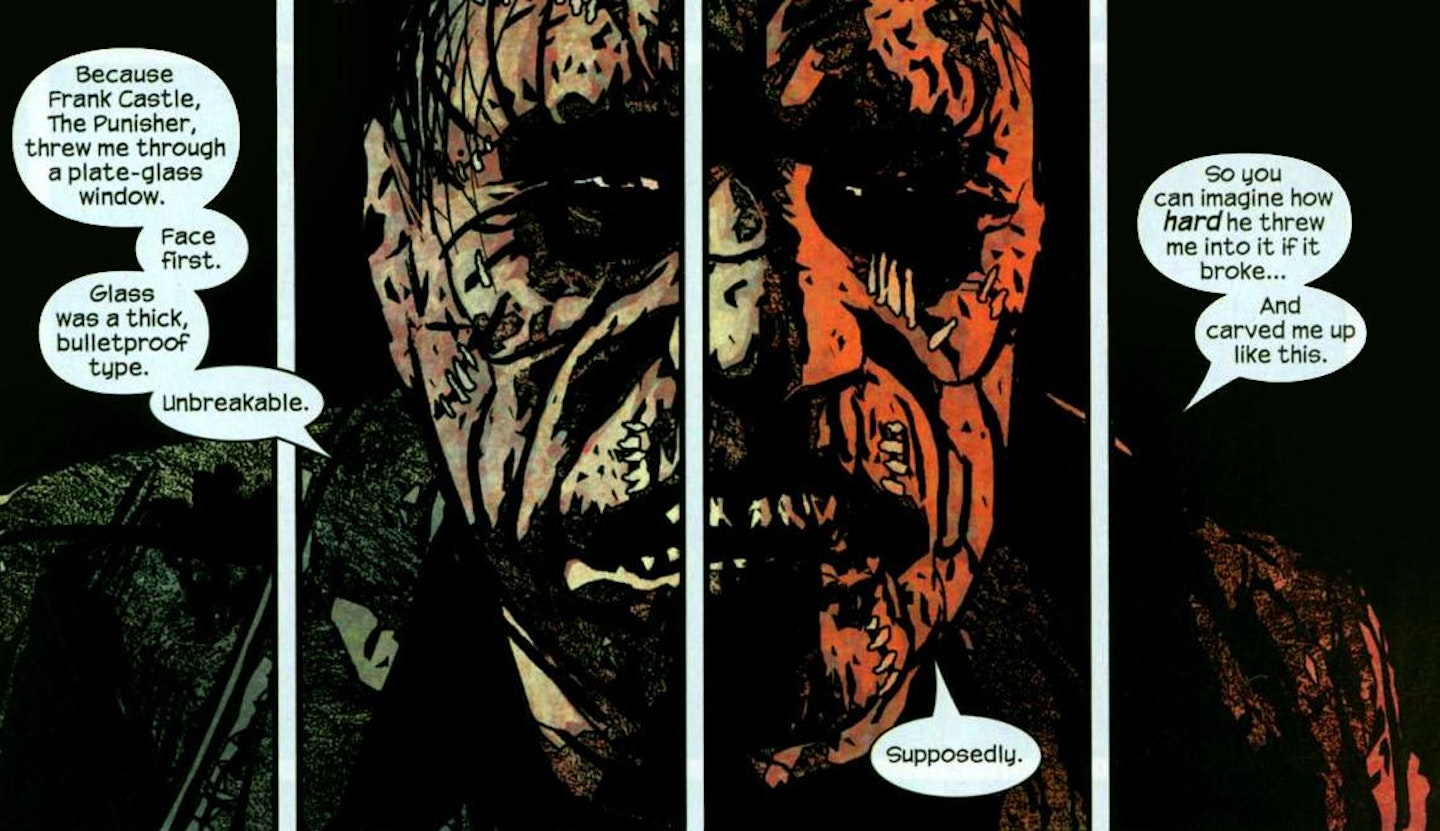
Jigsaw: Given his propensity for killing everyone, there aren't many recurring Punisher villains. But Jigsaw is the major exception (The Kingpin and Barracuda are among the others). New York mafioso Billy "The Beaut" Russo was involved in the gangland execution that took in the Castle family as collateral damage. He was known for his good looks until The Punisher smashed him through a window, leaving his face a patchwork of scars. Hence the new name. He's been a thorn in Castle's side ever since, but always lives to annoy another day. Punisher: War Zone saw him played by Dominic West.
Mickey Fondozzi: A career criminal that The Punisher allows to live in exchange for snitching services. He eventually got religion and turned over a new leaf, at which point Castle let him off the hook. He was in the 2004 Punisher movie, played by Eddie Jemison.
The Punisher on film
The Punisher (1989)
Punisher - Dolph Lundgren
Director - Mark Goldblatt
Reasonably faithful to the spirit, if not the letter, of the comics, editor-by-trade Goldblatt's Punisher is a decent enough, violent '80s actioner, with a solid Dolph front and center. He's an ex-cop rather than an ex-marine, but still loses his family to the mob (although it's by car-bomb in this case). Some of the origin story survives in a workprint, but the theatrical cut hits the ground running with Castle already plying his deadly trade from the sewers. Lou Gossett Jr. is the detective - Castle's former partner - on his trail, and the plot involves Castle getting in between the Mafia and the Yakuza. In one of the film's quirkier divergences from source, Castle here has a homeless informant called Shake (Barry Otto) who unaccountably speaks in rhyme.
The Punisher (2004)
Punisher - Thomas Jane
Director - Jonathan Hensleigh
As an FBI agent, Jane's Frank Castle is here involved in the death of arms dealer Bobby Saint (James Carpinello). Saint Sr., Howard (John Travolta), orders a hit at a Castle family reunion. And we're off. Castle wears the trademark skull this time out, although for oddly sentimental reasons: it's a T-shirt his son gave him. Screenwriter Hensleigh had been involved with the Hulk that eventually went to Ang Lee, so ended up getting his first shot at directing here, with uneven results. The film can't quite settle on a tone: sometimes it's a brutal crime thriller and at others it's a comic knockabout: particularly where Ennis characters like The Russian (Kevin Nash) and Spacker Dave (Ben Foster) are concerned. Jane is good though, and clearly took the character to heart. While he eventually walked away in exasperation from the film sequel that became Punisher: War Zone, he suddenly came out with an unofficial Punisher short film in 2012.
Punisher: War Zone (2008)
Punisher - Ray Stevenson
Director - Lexi Alexander
Where Hensleigh's film was neither one thing nor the other, Alexander's is both simultaneously: blackly funny and insanely violent. Ennis characters show up again - notably hapless detecive Martin Soap (Dash Mihok) and Irish-Rastafarian parkour idiot Maginty (T.J. Storm) - but they're better integrated into a fan-servicing plot that finally brings in Jigsaw (Dominic West), along with his film-specific brother Loony Bin Jim (played with maximum disturbance by Doug Hutchison, AKA The X-Files' Eugene Victor Tooms). Alexander's berserk vision suffered some studio interference, so we can only imagine how much more insane the film could have been if she'd been left alone. For the full story, Earwolf's special How Did This Get Made? podcast episode with Alexander and fan Patton Oswalt is well worth an hour of your time.
The abandoned TV series
With none of the three movies ever kicking off a franchise, there was some talk in 2011 of a TV series at Fox. Criminal Minds showrunner Ed Bernero's proposed clutch of hour-long episodes would have seriously tweaked the formula, re-envisioning Castle as a rising star of the NYPD, who moonlights as The Punisher when he can't get the results he wants through legal channels. So it would have been Dexter with a cop instead of a pathologist. Fox were reported to have committed to a "put pilot", which usually means a guaranteed airing and almost certain expansion to a full series. Not in this case, however, since that pilot never happened. In May, 2012, Fox announced it was "no longer moving forward". No further explanation for the abandonment was forthcoming.
Netflix
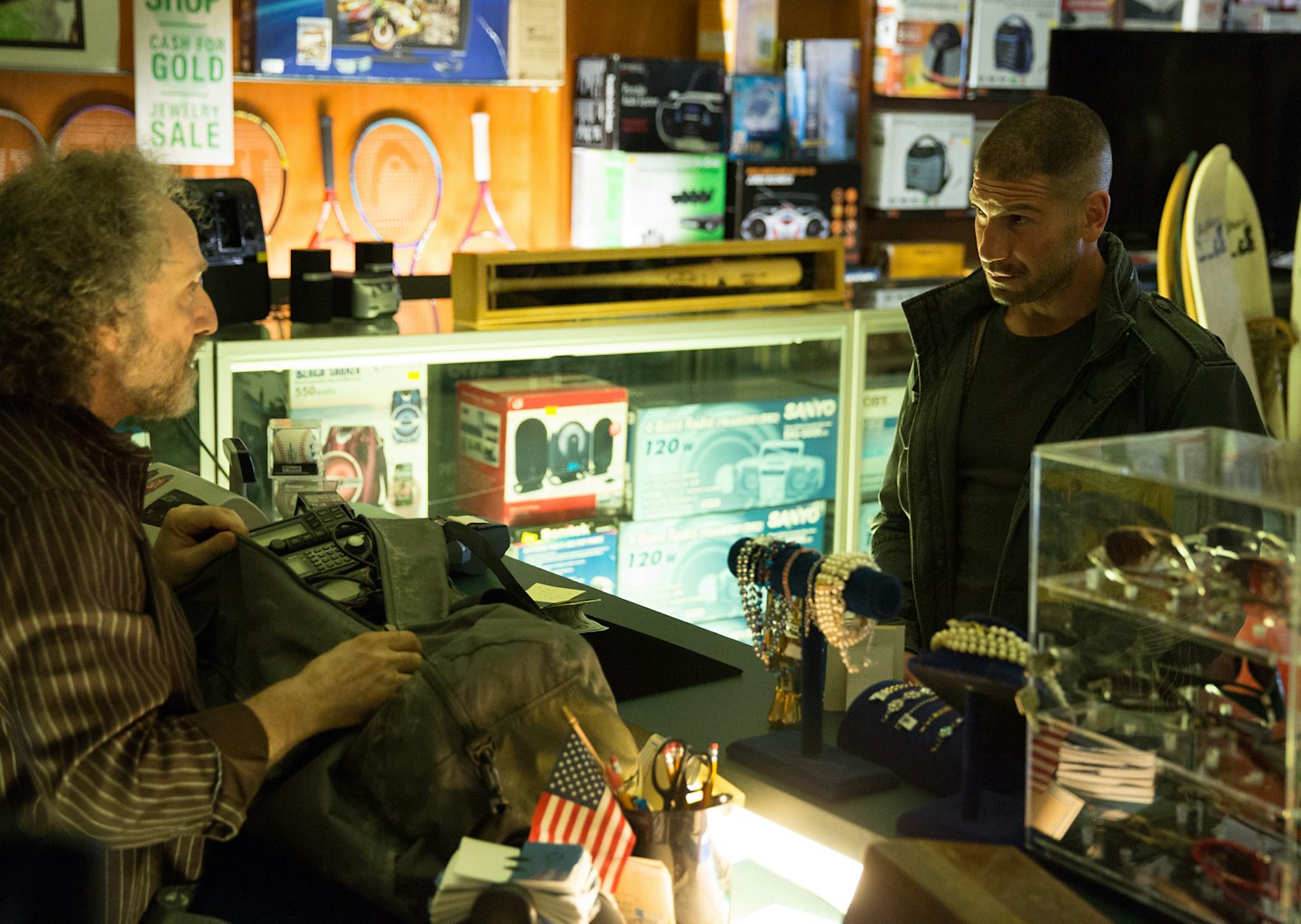
Arriving in March 2016, Netflix’s second season of Daredevil prominently featured The Punisher as played by Jon Bernthal. In some electrifying scenes, he butts heads with Charlie Cox's Matt Murdock, who’s unsure where this new vigilante stands, and can’t approve of his far more violent and deadly methods. Bernthal's appearance as the character was so well-recieved that a full Punisher series has now been comissioned by Netflix.
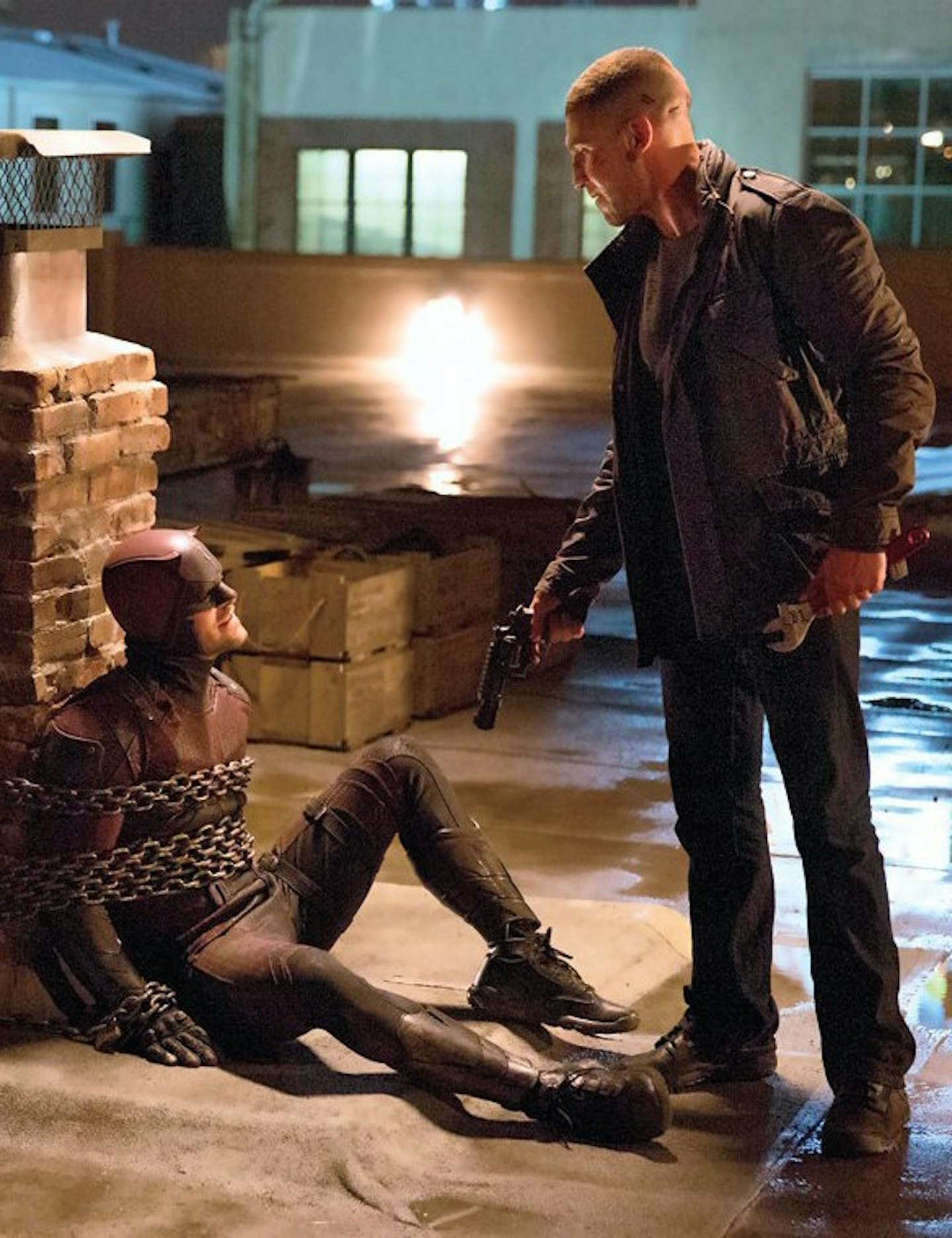
Five essential story arcs
Child’s Play (Daredevil #182-184)
Four years before he finally got his own series, Frank Miller appropriated The Punisher for his iconic Daredevil run, and found that he fitted much better into DD’s street-level crime-noir milieu than he ever had into more traditional superhero comics. Seeds for future Punishers are sown, in a story about drug dealers targeting children. Castle and Murdock approach this problem rather differently.
Circle of Blood (Punisher Vol.1, #1-5)
Castle’s first solo series is... eventful. Broken out of jail on Rikers Island by an organisation called The Trust, Castle gets involved in a plan to create a Punisher army, of which Jigsaw is somehow a part. He also tells journalist (and Daredevil pal) Ben Urich that he's killed the Kingpin, reasoning that the ensuing mob-war for power will result in gangsters offing each other in sizeable quantities. He's not wrong.
Welcome Back, Frank (Punisher Vol.4, #1-12)
Ennis grabbed Castle by the neck and hauled him back to relevance with his first, year-long stint on the title. Broadly, the story pits The Punisher against the Gnucci crime family, headed by the grotesque Ma Gnucci. But against all the odds, while revelling in the violence, Ennis also humanised Castle again to some extent, giving him a cast of likeable misfit supporting characters in the apartment block he calls a temporary base. Several elements from this series - that ad hoc new family; henchman The Russian; sadsack detective Martin Soap - would find their way into both the Jane and Stevenson movies.
The Slavers (Punisher MAX #25-30)
Ennis again, pushing the "adult" content that Marvel's MAX line allowed to its limits with a story about sex slavery and human trafficking. Its truly despicable villains might test even the staunchest liberal. Ennis, as always, enjoys pushing those buttons.
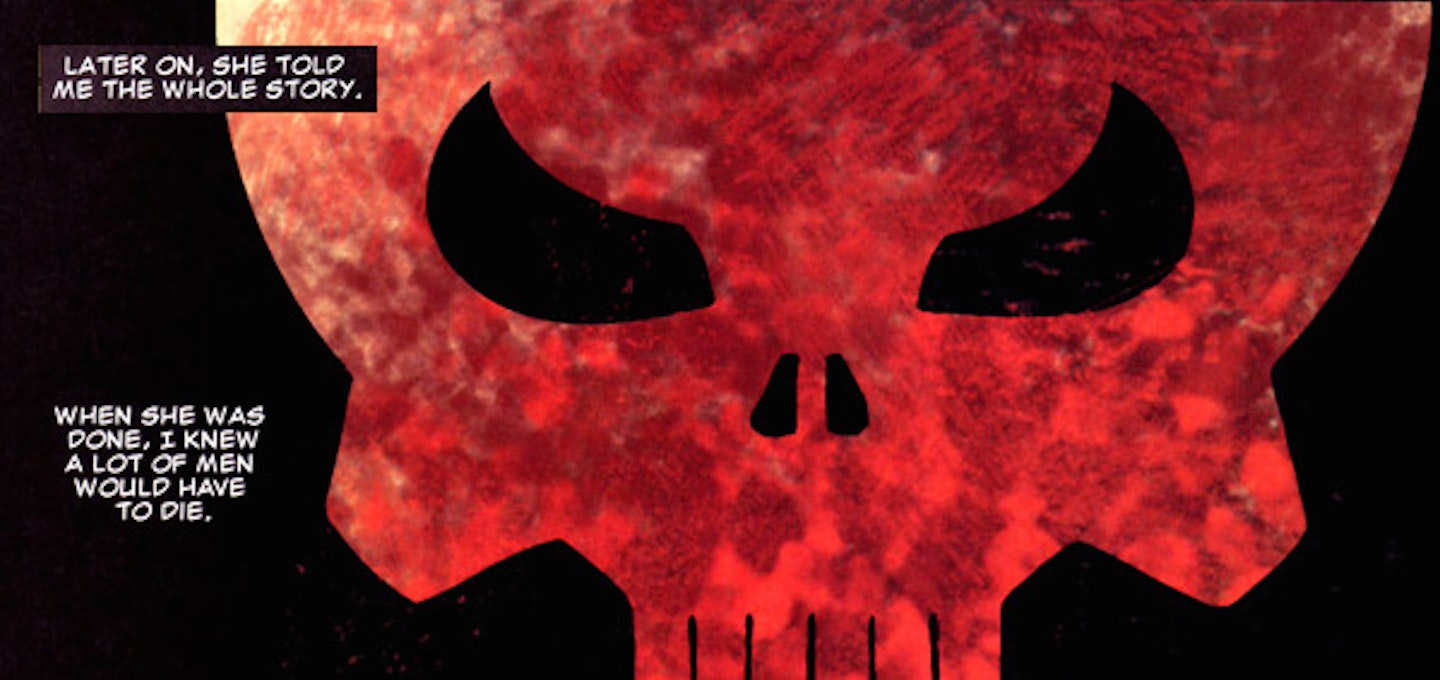
The Exchange (Punisher Vol.8, #1-16)
Post-Ennis, Greg Rucka took a similar tack to the one he had on Gotham Central, making his Punisher a book almost more about the day-to-day NYPD than its own central character. Kept in the background for long periods of time, this is a sadder and wiser Punisher, which isn't to say he won't still bring the carnage when necessary. The titular Exchange is a new criminal cabal in Castle's sights, and Rucka also introduces Rachel Cole-Alves, a sort of female Punisher (an Afghanistan veteran marine) whose wedding reception was massacred by The Owl. Not being a great team player, The Punisher doesn't like her too much, but forms a grudging alliance. Back in the wider Marvel universe after the MAX years, The Exchange also features Spider-Man and Daredevil. A source for Netflix? We'll see...
